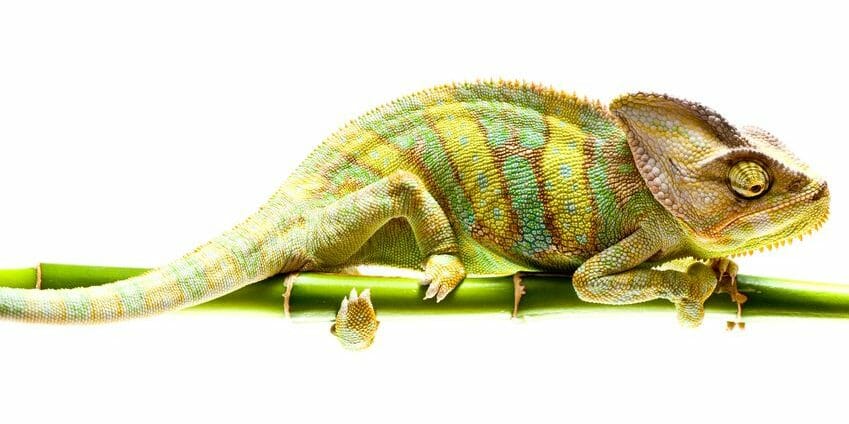When I was in college, I worked at a pet store in the mall, and I fell in love with a cute little chameleon. I wore my hair in a bun on top of my head at the time, and I would place him on my bun and he’d hold on while I walked around the store greeting customers (talk about your conversation starter). I got a kick out of placing him near my brown apron and watching him change colors…sometimes. When he wasn’t clinging to my bun or my apron, I would observe him in his terrarium. As I watched little “Charma Chameleon”, I wanted to know more about those fascinating creatures. As someone who moved around a lot as child and adapted to repeated change, I could relate to my tiny friend. And as I reflect, I see that we have some important characteristics in common. We both knew:
Being adaptable doesn’t mean not knowing who you are. Chameleons change color only as needed. If they are on a leaf, they are green if they need to be green, and if they are on a branch, they are brown if they need to be brown. But when it’s not near anything it needs to adapt to, it knows what color to show. The chameleon was aware of his authentic self and comfortable with who he knew himself to be.
Adapting is a conscious choice – Chameleons change their color to reflect their moods and to camouflage themselves. It is both a communication tool and a defense mechanism that allows them to survive. When our communities, organizations and world undergo change, it is those who choose to adapt to the change that thrive in it. Ultimately, a chameleon knows why he must adapt and that understanding keeps him from making arbitrary change.
As leaders, we need to be adaptable AND authentic. Like chameleons, we know who we are, we know our values, we know our “true colors”. But we also recognize the value of adapting to changes in our environment.






